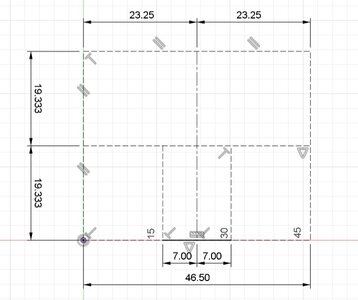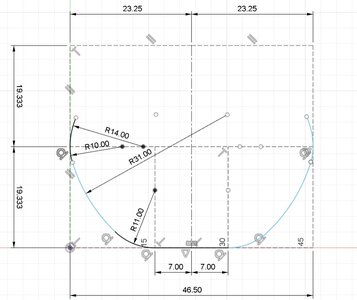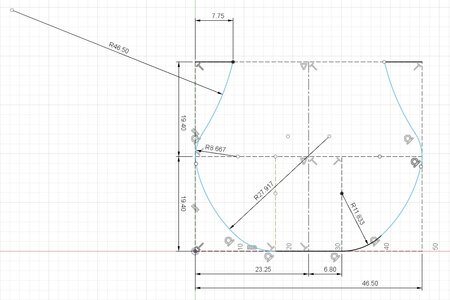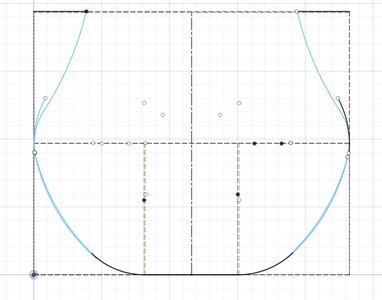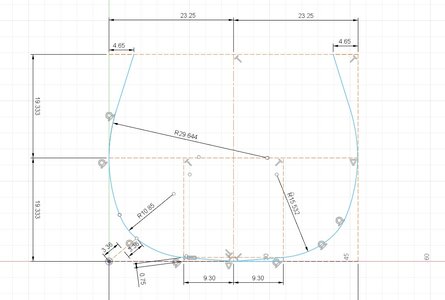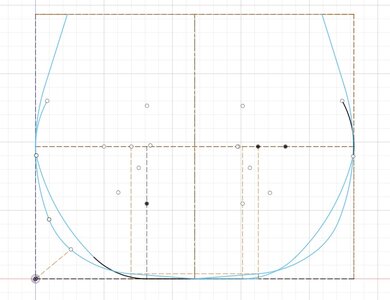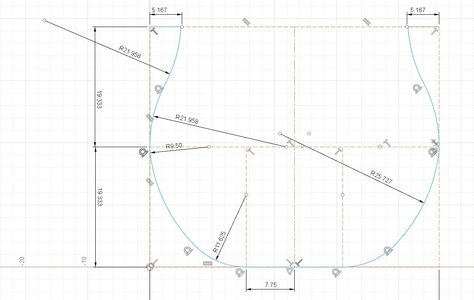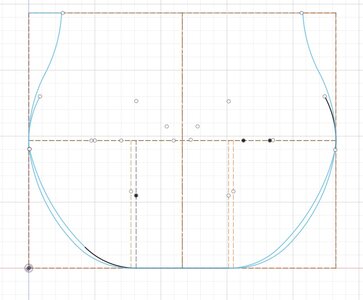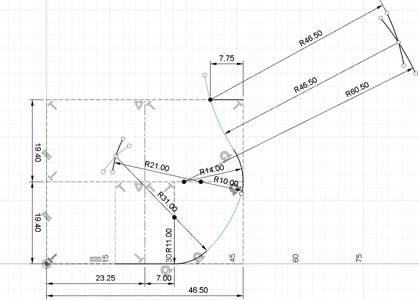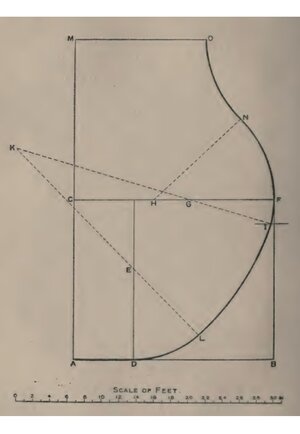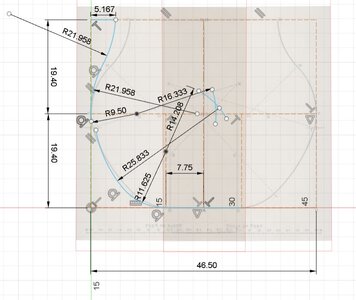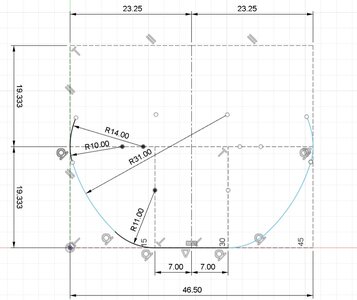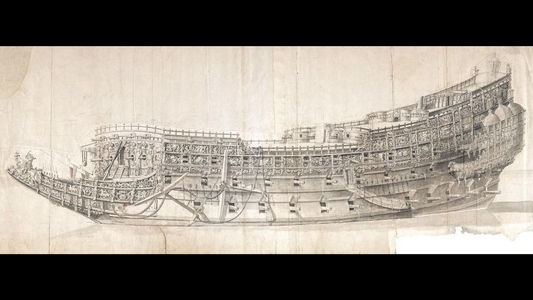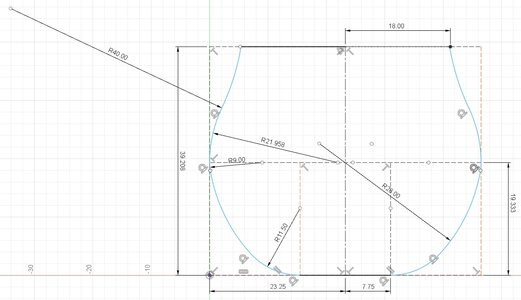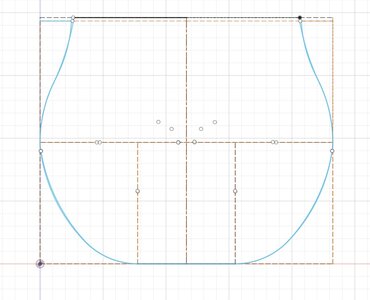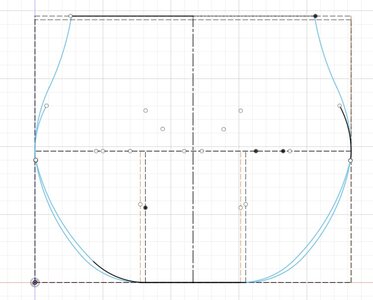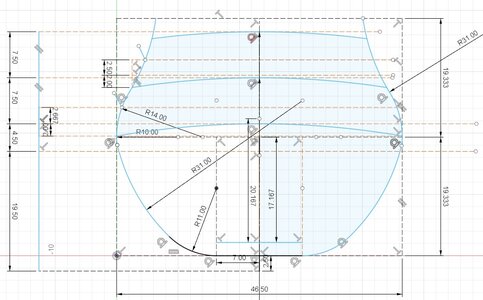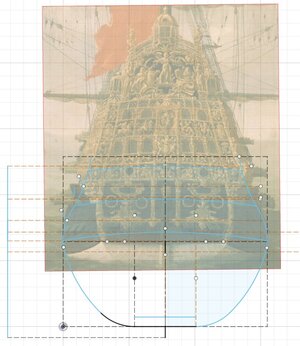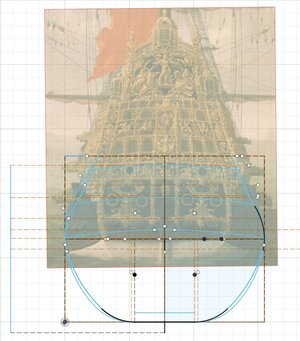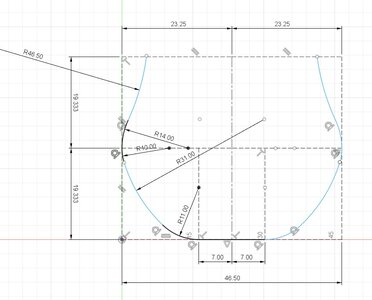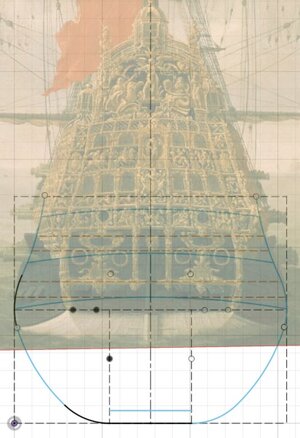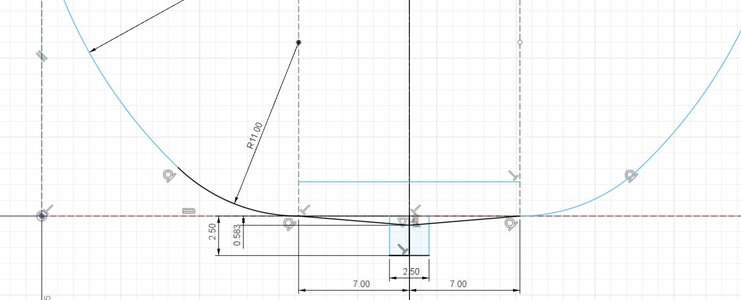The next step is comparing the center frame construction of the different treatise with each other and the Pett center frame as handed over by Phineas Pett.
The Phineas Pett center frame of SotS is set up as below.
-Extreme beam bm = 46'6"
-Depth extreme beam to top of keel = 19'4"
-Breadth of the floor = 14'
-Sweep at the runghead = 11'
-Sweep at the right of the mould = 31'
-Sweep between waterline and breadth = 10'
-Sweep above the breadth = 14'
These values are handed over by Phineas Pett himselve, so these are a solid base for the center frame. Only the top timber sweep and tumble home are missing, so these should be reconstructed from historical data sources.
To draw the center frame first the frame grid is drawn, in this you show the prime parameters of the frame being the extreme beam, depth and floor.
View attachment 427231
The frame data as handed over by Pett is now drawn into the center frame grid and looks like below.
View attachment 427241
As we see above we are missing the top timbers of the frame which are certainly needed for a proper frame reconstruction. To reconstruct these we have 4 possible candidate temporary sources.
First is the 1620 Treatise on shipbuilding. Following this treatise and using the extreme beam and depth provided by Pett create a frame as reconstructed below.
View attachment 427946
and compared to the Pett frame you see the nearly similar underwater hull.
View attachment 427955
This frame is very close to the arcs as provided by Pett however above the bm the Pett hul is wider, expect this was done to create more space in the upper hull for the higher gun decks. After all it was a revolutionary ship design.
The next to compare is Bushnell, his book "the compleat shipwright" of 1664. This book is slightly more complicated to read, it is a real 17th century English book which is not rewritten, but sofar I have found all data for a frame reconstruction.
I have reconstructed his frame again using the same bm and depth as provided for SotS and the result is completely different to Pett and the 1620 results.
View attachment 427947
Comparison with the Pett design.
View attachment 427956
The underwater ship is much more square with a wider floor and a deadrise. The top timbers are also wider resulting in a wider upper deck.
Certainly not an SotS candidate to use but more a cargo ship frame instead of a warship.
The last one is Dean of 1670. Again same bm and depth used to reconstruct the frame.
View attachment 427948
The frame of Dean is again close to Pett. The underwater ship shape is more full and where the 1620 upper frame was more sleek than Pett the Dean frame is also in the upper frame more full.
View attachment 427957
Comparing all these Bushnell is far from the given data from Pett. 1620 treatise is spot on for the lower hull, closer than Dean. However the upper hull of Pett is wider due to his larger radius above breadth sweep of 14' instead of the continuation of his 10' radius of his breadth to waterline sweep. As mentioned I expect this was done to make more space on the upper gun decks, you see this also in the later designs of Dean which have less tumble home to create more space.
The choosen tumble home is determining the width of the upper deck.
In the 1620 treatise the tumble home is 7' 9" resulting in a top timber width of 46' 6" - (2 × 7' 9") = 31'. The top timber sweep according the 1620 treatise is equal to the bm or 46' 6".
Following the 1620 treatise Pett s frame would look like below. This is also the choice of Werner Bruns reconstruction.
View attachment 427950
In Pett s biography they also reconstructed the Pett midship frame, actually here they used Dean s methode for the top timber sweep which is equal to the above breadth sweep of 14" in combination with the 1620 tumble home.
As Dean uses a much bigger above breadth sweep of nearly 22' for this size of frame this example can t be right to my opinion.
View attachment 428212
Dean and also Bushnell are both using far less tumble home in their designs, but both are written over 30 years after design of the SotS when three deckers were normal.
Their tumble home is around 5' creating an upper deck space of over 35'.
See below the difference between Dean and the Pett biography frame using the 1620 tumble home, a significant difference.
View attachment 427953
This is the next step in my research. Determining the tumble home and top timber sweep. Pett s given data points to slightly less tumble home creating a wider top deck. The sweep I expect to be the 1620 bm sweep of 46' 6" or slightly less.
Deck width maybe between Dean and 1620.
How to determine? I will prepare the frames in Fusion 360 and project them on the Van de Velde drawings and Lely painting, lets see if we can find a match, but that will be next time.
So the proper top to the frame below has to be added.
View attachment 427958

 Just joking, Maarten - if the RR had been a Bentley, I would have shut up!
Just joking, Maarten - if the RR had been a Bentley, I would have shut up! Just joking, Maarten - if the RR had been a Bentley, I would have shut up!
Just joking, Maarten - if the RR had been a Bentley, I would have shut up!

